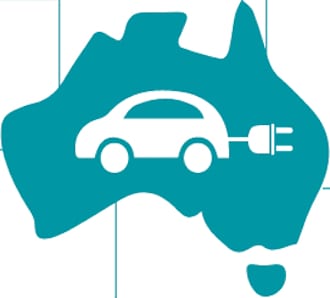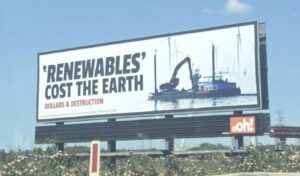Boosting Australia’s electric vehicle take-up to double the amount projected under business-as-usual would deliver a $2.9 billion boost to GDP, create thousands of new jobs, and save drivers an average of $800 a year between now and 2030, a new report has found.
The report, published on Thursday, was prepared by PricewaterhouseCoopers for the Electric Vehicle Council (EVC), the NRMA and the St Baker Energy Innovation Fund.
It models a scenario – dubbed the AU 50@30 case – that assumes that by 2030, 57 per cent of new car sales in Australia will be battery electric vehicles, or pure EVs (not including plug-in hybrids).
To put that in perspective, current forecasts by the Australian Energy Market Operator (AEMO) under a neutral EV growth scenario indicate EVs would account for just 10.4 per cent of vehicles on the road by 2030, compared to 20.8 per cent in the PwC scenario.
As we have reported, the federal government has indicated – both through statements and through its lack of action to support EV uptake – that it, too, sees EV growth happening at around this rate, resulting in just 1 million EVs on Australia’s roads by 2040. (An outlook that was recently slammed as “pathetic.”)
Taking all this into account – and the fact that out of the 1,157,000 new cars purchased around Australia last year, EVs accounted for just 2,200 – the the PwC scenario represents a rather big leap.
But, as the report hopes to point out, it is not such a big leap if you consider the rapid progress that is being made in other countries; the falling costs of the technology; the potentially huge environmental benefits; and the ambitious EV plans of almost all of the major global car manufacturers.
Nor is it such a big leap when you consider Australia is coming off a base of little or no policy incentives from both state and federal governments. So there is plenty of room to move – and a multitude of reasons why we should.
“Reform to incentivise the purchase of cleaner, safer vehicles will improve customer choice and generate economy activity while reducing costs to governments from sectors like health care,” the report says.
Indeed, the report found multiple economic benefits of building teh rate of EV uptake to a level that would push BEVs to around 20 per cent of the new sales market in 2030.
These included an increase to real GDP by $2.9 billion, and an increase to net employment by 13,400 jobs, relative to 2016-17. It would also result in a projected $15 billion reduction in fuel imports, the report said.
And the benefits would not just flow to the broader economy. The report notes that Australia’s failure to embrace EVs is also costing consumers.
By 2030, it says, each EV is estimated to save drivers $1,700 per annum in total ownership costs (savings are assumed to increase between 2018 to 2030, with an average saving of $810 per annum over the analysis period).
In terms of Australia’s climate and emissions reduction target – committed to through the Paris climate deal – a shift to EVs would also be a big win. Particularly, when it is aligned with the current shift to a low-carbon electricity grid.
According to the findings of the report, EV uptake under the 50@30 scenario would deliver 18 million tonnes of emission reductions – equivalent to a $628 million tax cut – from the sector with the fastest growing emissions in the nation.
As to the economic cost of boosting Australia’s EV uptake – the part of the report Murdoch papers have chosen to lead on – PwC puts that at a net $3.2 billion capital injection in supporting infrastructure.
As the report points out, it is a relatively small figure, considering the federal government has set aside $75 billion over the next 10 years to be spent on transport infrastructure.
The amount is also negligible when the above projected savings, and contributions to GDP, are all factored in.
The report says the $3.2 billion of investment required to support EV growth over the period 2018 to 2030 is would mostly go to increased investment in EV charging infrastructure and the reduced investment in areas such as fuel infrastructure.
But of course, all this still relies of the support of the federal government, at a time when that does not seem forthcoming.
Just yesterday, during his heavily coal-focused National Press Club address, federal resources minister Matt Canavan was asked whether Australia’s flagging petroleum production shouldn’t pave the way for “branching out and encouraging things such as electric cars… and renewable energy.”
His response was to talk up the “nation-building, changing” prospects of two potential shale reserves in the Great Australian Bight and in the Northern Territory (where there is a moratorium on exploration and production). Nothing on EVs or renewables.
Elsewhere in the Coalition, Queensland Nationals MP George Christensen distinguished himself earlier this month by declaring the state government’s EV super highway of fast charging stations from the Gold Coast to Cairns an expensive failure.
Ironically, or not, he came to this conclusion because he observed that not enough people were using one of the stations, located in the coastal town of Bowen in the Whitsunday Region of Queensland.
But, as the PwC report notes – and the graphic below confirms – the shift to EVs is happening, much like the shift to renewable energy is happening, whether governments choose to support it, or not. The choice we have is whether we want to be in the driver’s seat, or get run over.
“The creation of incentives for cleaner vehicles would also set the market up to avoid shocks that will ultimately arise when upfront costs of EVs fall below parity with internal combustion engine (ICE) cars, expected around 2025,” the report says.
And one of those shocks, it points out, would be felt in the national electricity market, which just happens to be on the cusp of a major transformation, itself.
“Through the National Energy Guarantee, the Australian government, the Australian Energy Market Commission and the Australian Energy Market Operator must plan to ensure dispatchable electricity is able to meet the needs of electric vehicle operations,” the report notes.
“The electricity needs of fast charging infrastructure cannot be overlooked in electricity planning, with
some fast chargers requiring on-demand power similar to a factory or other industrial facility when in use.
“It is incumbent on the Australian government to lead this transition.”









